In the vibrant world of language and nature, few words capture the essence of beauty and complexity quite like “iris.” This seemingly simple term unfolds into a tapestry of meanings, from the delicate petals of a flower to the intricate structure of the human eye. The plural of iris, “irises,” adds depth to this exploration, emphasizing the beauty and variety found in both nature and anatomy. But when we encounter more than one, a linguistic puzzle emerges: what’s the plural of iris? Let’s embark on a colorful journey through grammar, botany, and anatomy to unravel this mystery.
What is the Plural of Iris?
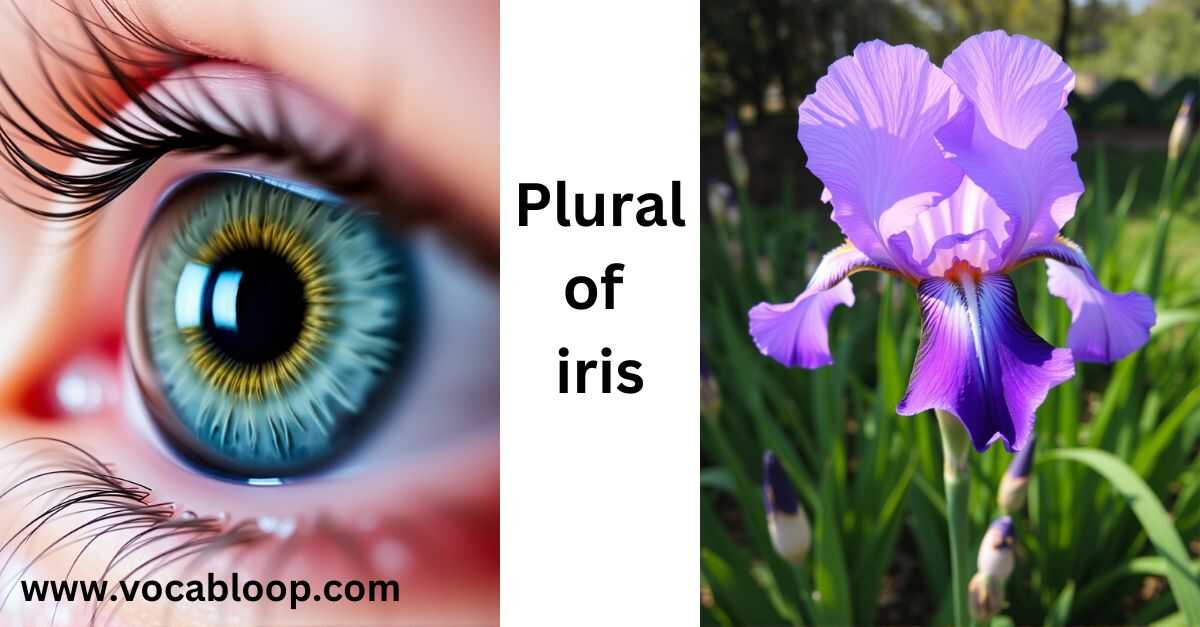
The plural of iris isn’t as straightforward as you might think. In fact, it’s a perfect example of how English can surprise us with its quirks. There are two correct plural forms:
- Irises: The most common plural form, used in everyday language.
- Irides: A specialized plural, primarily used in scientific and medical contexts.
This duality reflects the rich history and varied applications of the word “iris” across different fields. Let’s dive deeper into why we have these two plural forms and how to use them correctly.
Why Are the Plurals ‘Irises’ and ‘Irides’?
The existence of two plural forms for iris stems from its diverse origins and uses. Here’s a breakdown:
- Irises: This plural follows the standard English pluralization rules for most nouns ending in -is. It’s the go-to choice for general usage, especially when referring to the flower genus Iris or multiple instances in everyday contexts.
- Irides: Derived from the word’s Latin roots, this plural form is a remnant of ancestral language influence. It’s predominantly used in scientific literature, particularly when discussing the anatomical iris of the eye.
This dual pluralization showcases the fascinating interplay between language borrowing and evolving usage over time. It’s a testament to how English adapts and preserves linguistic heritage simultaneously.
What is an Iris?
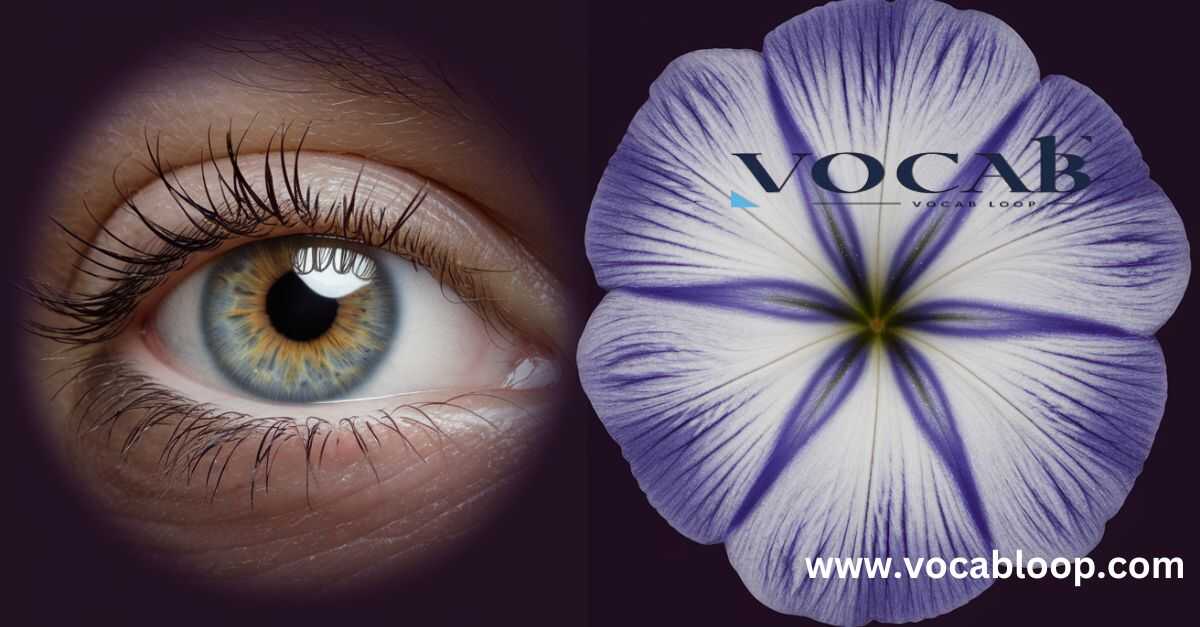
The term “iris” encompasses multiple meanings, each as intricate and captivating as the last. Let’s explore the primary definitions:
- Botanical Iris:
- A genus of about 300 species of flowering plants
- Known for their showy flowers featuring three upright petals and three drooping sepals
- Comes in a wide array of vivid colors, from deep purples to bright yellows
- Anatomical Iris:
- The colored part of the eye surrounding the pupil
- Responsible for controlling the amount of light entering the eye
- Unique to each individual, used in iris recognition technology
- Mythological Iris:
- In Greek mythology, the goddess of the rainbow
- Messenger of the gods, often depicted with wings
Each definition of iris brings its own unique texture to the word’s meaning, enriching our understanding of this multifaceted term.
Iris in British English
In British English, the pronunciation and usage of “iris” align closely with its classical roots. Here are some key points:
- Pronunciation: /ˈaɪrɪs/ (eye-ris)
- Plural preference: While both “irises” and “irides” are recognized, “irises” is more common in everyday speech
- Usage in literature: British authors often employ “iris” metaphorically, drawing on its associations with rainbows and vibrant colors
“The iris of the eye is like a rainbow, a vibrant center of individuality.” – Anonymous British poet
Iris in American English
American English takes a slightly different approach to “iris”:
- Pronunciation: /ˈaɪrəs/ (eye-rus)
- Plural preference: “Irises” is overwhelmingly favored in both casual and formal contexts
- Cultural significance: The iris flower holds special meaning in various U.S. states, influencing its usage in American English
| State | Iris Significance |
| Tennessee | State flower (Iris germanica) |
| Louisiana | Fleur-de-lis symbol derived from iris |
In other languages iris
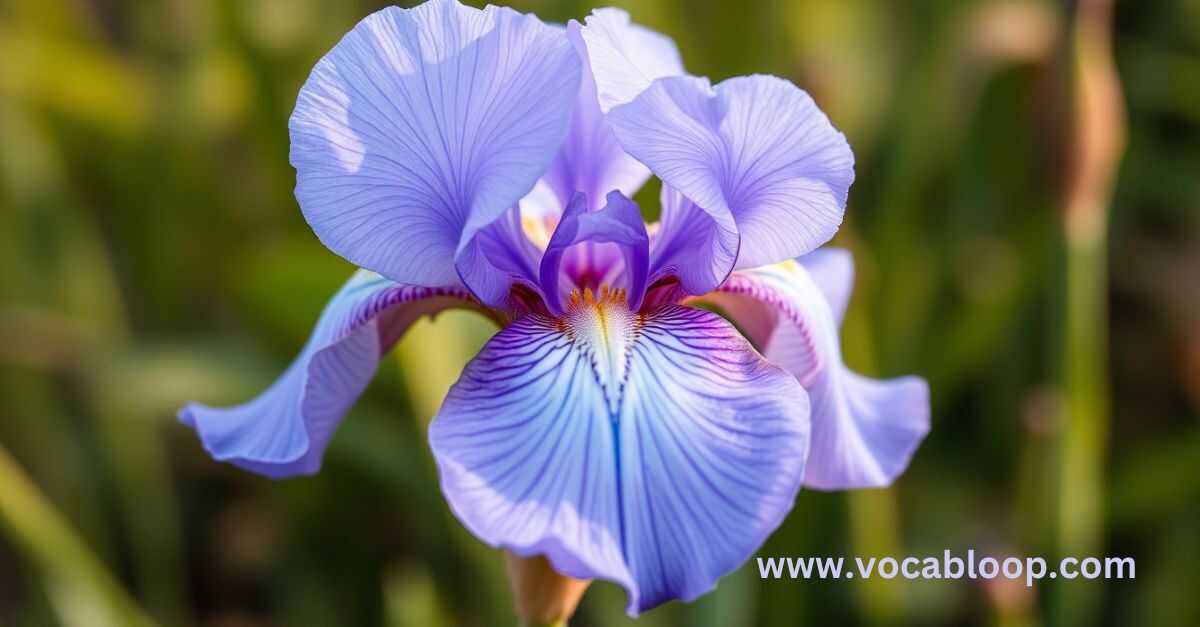
The concept of “iris” transcends linguistic boundaries, appearing in various forms across the globe:
- French: “iris” (pronounced: ee-rees)
- Spanish: “iris” (pronounced: ee-ris)
- German: “Iris” (for the flower), “Regenbogenhaut” (for the eye part, literally “rainbow skin”)
- Japanese: “アイリス” (airisu) for the flower, “虹彩” (kōsai) for the eye part
This global presence highlights the universal appeal and importance of the concept, whether referring to colorful flowers or the intricate structure of the eye.
Using ‘Iris’ in Sentences (Singular Usage)
Understanding how to use “iris” in its singular form is crucial for clear communication. Here are examples across various contexts:
- Botanical: “The vibrant purple iris stood out among the garden’s greenery.”
- Anatomical: “The doctor examined the patient’s iris for signs of inflammation.”
- Technological: “The security system uses iris recognition to grant access.”
- Artistic: “Van Gogh’s painting captured the delicate texture of an iris petal.”
- Metaphorical: “Her eyes were an iris of emotions, revealing her inner thoughts.”
In each of these sentences, “iris” refers to a single instance or concept, showcasing its versatility across different fields.
Origins of the word ‘Iris’
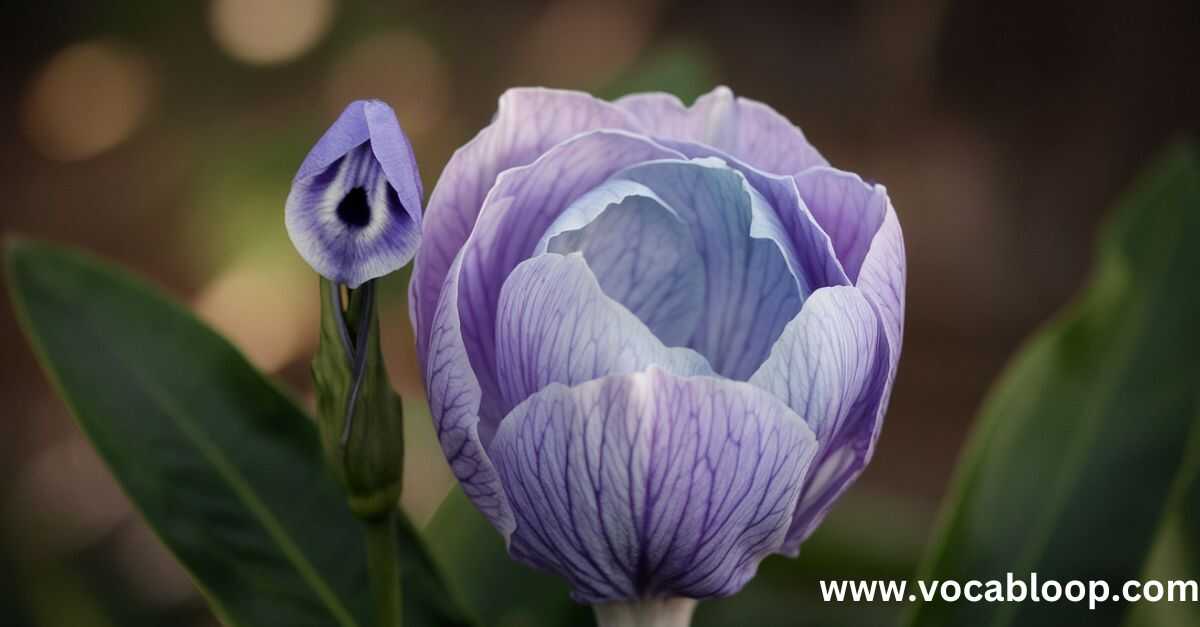
The etymology of “iris” is as colorful as the word itself:
- Greek roots: Derived from “Iris,” the goddess of the rainbow in Greek mythology
- Latin adoption: Entered Latin as “iris,” maintaining its connection to rainbows and colorful appearances
- Old French influence: Transitioned through Old French before entering Middle English
- Scientific classification: Carl Linnaeus adopted “Iris” as the genus name for these flowers in the 18th century
This rich etymological journey reflects the word’s enduring appeal and its ability to bridge multiple languages and cultures.
Synonyms for “Iris”
For the Flower:
- Flag (a common name for some iris species)
- Fleur-de-lis (stylized iris used in heraldry)
- Sword lily (for some iris varieties)
- Bearded iris (specific type of iris)
- Siberian iris (specific iris species)
- Dutch iris (common garden iris variety)
- Blue flag (another name for iris species)
- Purple flag (referring to purple iris varieties)
- Water iris (iris species found in wetland areas)
- Louisiana iris (species native to the southern U.S.)
For the Eye Part:
- Pupillary zone
- Ciliary zone
- Ocular membrane
- Eye diaphragm
- Colored ring (descriptive synonym)
- Iris sphincter (specific anatomical term)
- Iris dilator (muscular component of the iris)
- Anterior segment (general part of the eye including the iris)
- Pupil border (close anatomical area)
- Eye pigmentation (referring to the iris’s color)
In Color Theory:
- Rainbow hues
- Spectrum
- Iridescence
- Prism colors
- Chromatic band
- Aurora (natural display of colors akin to a rainbow)
- Shimmer (referring to changing colors)
- Radiance (a play of colors and light)
- Luster (soft glowing quality)
- Opalescence (similar to iridescence with a play of colors)
Using ‘Irises’ and ‘Irides’ in Sentences (Plural Usage)
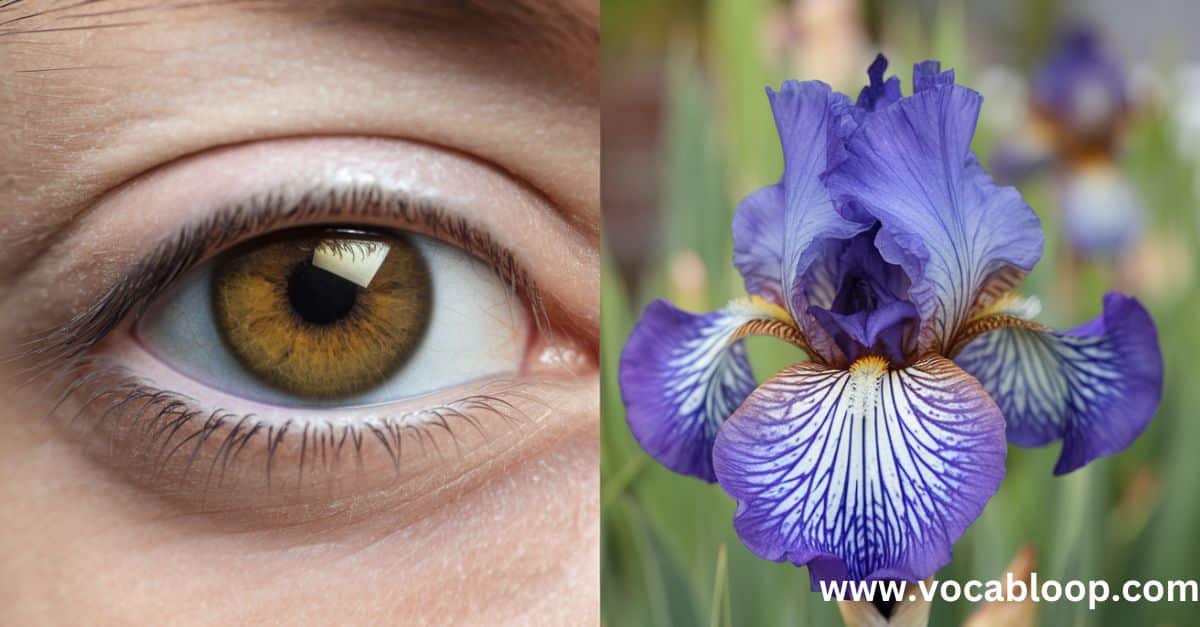
Usage of “Irises”: 10 sentences
- The garden was abloom with colorful flowers, particularly the irises in shades of purple and blue.
- Monet’s series of paintings featuring irises captured the flowers’ delicate beauty.
- “Plant these irises in full sun for the best blooms,” advised the gardener.
- The florist arranged a bouquet of irises and roses for the spring wedding.
- Irises are known for their unique texture and intricate petal patterns.
- The perfumer extracted essential oils from various irises to create a new fragrance.
- In many cultures, irises symbolize wisdom, faith, and courage.
- The botanical garden boasted a collection of over 100 species of irises.
- Irises typically bloom in late spring, adding a burst of color to many landscapes.
- The photographer focused on capturing the vivid colors of the irises after a light rain.
Usage of “Irides”: 10 sentences
- Ophthalmologists study the irides to diagnose various eye conditions.
- The research paper discussed how irides regulate light entering the eye.
- Different species of animals have uniquely adapted irides for their environments.
- The textbook contained detailed illustrations of irides from various mammals.
- Genetic factors play a significant role in determining the color of human irides.
- The scientist compared the irides of nocturnal animals to understand light sensitivity.
- Irides contain muscles that control pupil dilation and contraction.
- The study of irides, known as iridology, is considered an alternative medicine practice.
- Evolutionary biologists examine the development of irides across species.
- The medical journal published new findings on how irides respond to certain medications.
FAQs
1. What is the difference between “irises” and “irides”?
- Irises is the standard plural form used in general contexts, such as referring to flowers or artistic depictions.
- Irides is a more specialized term, primarily used in scientific or medical discussions about the anatomy of the eye.
2. When should I use “irides” instead of “irises”?
Use irides when discussing the anatomical or biological aspects of the eye in a technical or scientific context. For instance, in ophthalmology, irides is preferred when referring to multiple irises of different individuals or species.
3. Is “irides” ever used for the flower?
No, irides is reserved for anatomical discussions. When referring to multiple iris flowers, irises is the correct plural form.
4. Why does “iris” have two plural forms?
The dual plural forms arise from the word’s diverse origins and applications:
- Irises follows standard English rules for pluralizing nouns ending in -is.
- Irides is a direct borrowing from Latin, where the plural of iris (meaning rainbow) is irides.
5. Are there other English words with similar dual plurals?
Yes, several words of Latin or Greek origin have dual plurals depending on the context. For example:
- Appendix → Appendices (scientific) or Appendixes (general)
- Index → Indices (mathematical/scientific) or Indexes (general use)
Conclusion
The journey through the plural of iris reveals more than a grammatical rule; it highlights the interplay between language, science, and culture. The words “irises” and “irides” reflect the beauty and complexity of both the flower and the eye.
The iris continues to captivate scientists, artists, and language enthusiasts alike. By embracing both forms, we appreciate the rich meanings this simple word carries in describing the natural world.

Alex Hormozi is a seasoned blogger at Vocab Loop, known for his deep insights into language, vocabulary, and grammar. With years of experience in writing, Alex shares practical tips and effective strategies to help readers improve their linguistic skills and enhance their writing abilities.

